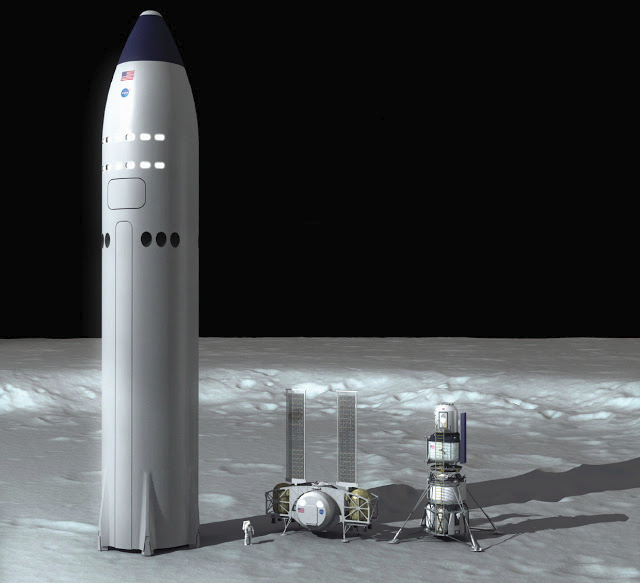This is a text automatically translated from Italian. If you appreciate our work and if you like reading it in your language, consider a donation to allow us to continue doing it and improving it.
The articles of Cassandra Crossing I'm under license CC BY-SA 4.0 | Cassandra Crossing is a column created by Marco Calamari with the "nom de plume" of Cassandra, born in 2005.
Let's keep talking science, science fiction and space travel with Cassandra!
This article was written on April 19, 2021 from Cassandra
Cassandra Crossing 477/ Silver Fins, Immense Spaceships
SpaceX materializes a science fiction icon, considered by many to be naive.
Once upon a time there was science fiction, the covers of Urania and the first genre blockbusters like "DestinationMoon” in which the astronauts descend the ladder of the very tall rocket, which has just landed in the Harpalus crater.
Yes, because in the myth of the spaceship there were rockets tall, beautiful and slender, with silver fins and fiery jets that exploded from them..



Then the "real" race to the Moon and the Apollo project changed the visual imagery of science fiction.
Despite being a very expensive gimmick, the Saturn-V did its dirty work and brought man to the Moon. But, let's face it, the Saturn-V and the LEM were truly rubbish in terms of aesthetics. They have, however, inspired other decades of science fiction films; aerospace engineering and its functionalism reigned supreme, and aesthetics, despite the efforts of special effects modelers, were put aside.
Then SpaceX “choreographed” the synchronous landings of the Falcon 9, and 1950s science fiction returned to the fore; The landings of two twin boosters of the Falcon Heavvy were truly the "materialization" of a science fiction classic.
After this long introduction, let's get to the point.
The other day Cassandra was reading the very interesting news that NASA has opened a race for the next lunar launcher, and that SpaceX won it with this aileronless variant of Starship.

It seemed like "commercial" news, but as soon as Cassandra looked at the illustration, a sudden déjà vu occurred; compare it to the image of George Pal's spaceship.
And below, compare it to the shape and size of competing lunar vehicles.
It seemed like "commercial" news, but as soon as Cassandra looked at the illustration, a sudden déjà vu occurred; compare it to the image of George Pal's spaceship.
And below, compare it to the shape and size of competing lunar vehicles.

What can I say, George Pal and Professor Marziano II evidently already understood everything. And the almost kitsch profile of the Starship when the engines are turned on looks like a model taken from 70s Japanese science fiction films, or directly from Thunderbird 1 from the animated series "Thunderbirds”.


Are aerospace engineering and ancient science fiction imagery coming together?
Who knows if other classic illustrations of today's science fiction will prove to be the same as tomorrow's reality.
Marco Calamari

Video column “A chat with Cassandra”
Cassandra's Slog (Static Blog).
Cassandra's archive: school, training and thought
Join communities
If you have found errors in the article you can report them by clicking here, Thank you!







